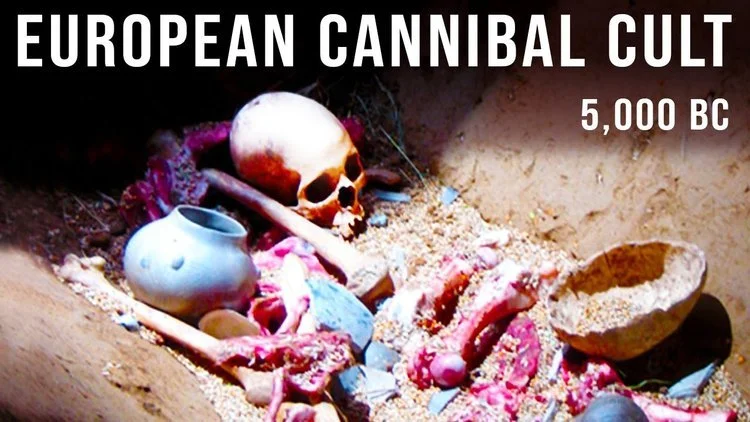The practice of cannibalism has had various expressions throughout history and across different cultures. In the case of Neolithic Europe, archaeological investigations and ethnographic studies have provided insights into the occasionally observed exo-cannibalism within this region. For example, the unusual settlement at Herxheim, attributed to the Linear Pottery culture, contained large, overlapping pits with the remains of over a thousand people, along with animal remains and artifacts. This site has sparked debates regarding evidence of widespread cannibalism due to conflicting analyses of the remains, which have yielded evidence of chop marks, butchering techniques, bone discard patterns, evidence of cooking, and tooth marks.
Additionally, isotope analysis suggests that people from 500 km away were involved with the site, prompting discussions about its potential function as a site of healing, sacrifice, or cultural decline. Meanwhile, genetic analysis in Neolithic Iberia and Provence, France, has suggested ritual consumption of human remains due to indications of boiling, cut marks, and bone cracking. These findings underscore the complexity of mortuary rituals in Neolithic Europe, reflecting a pattern of processing remains through secondary burials and other activities while allowing for the possibility of cannibalistic practices in some instances.
Conversely, in cultures such as the Fourier people of Papua New Guinea, the practice of funerary cannibalism, known as endo-cannibalism, is a necessary ritual for the deceased's soul to reach the Land of the Dead. This ritualistic form of cannibalism is deeply ingrained in their cultural traditions and differs significantly from instances of exo-cannibalism observed in Neolithic Europe. Further examples include certain warrior peoples in the Fiji Islands and other societies around the world consuming parts of their defeated enemies as a ritual or power-taking practice. These cultural practices illustrate the diverse contexts in which cannibalism has occurred throughout history, whether as an act of desperation, as part of mortuary rituals, or as a way of exerting dominance or asserting power within certain societies.
In summary, the complexity and diversity of cannibalistic practices in different cultures and historical contexts reveal the multifaceted nature of this phenomenon. While evidence of exo-cannibalism and debated instances of cannibalism have been observed in Neolithic Europe, funerary cannibalism in cultures such as the Fourier people of Papua New Guinea and the consumption of defeated enemies in the Fiji Isles and other warrior societies illustrate distinct cultural expressions of this practice. These examples underscore the importance of considering the specific cultural and historical contexts in understanding the motivations and implications of cannibalistic practices.







